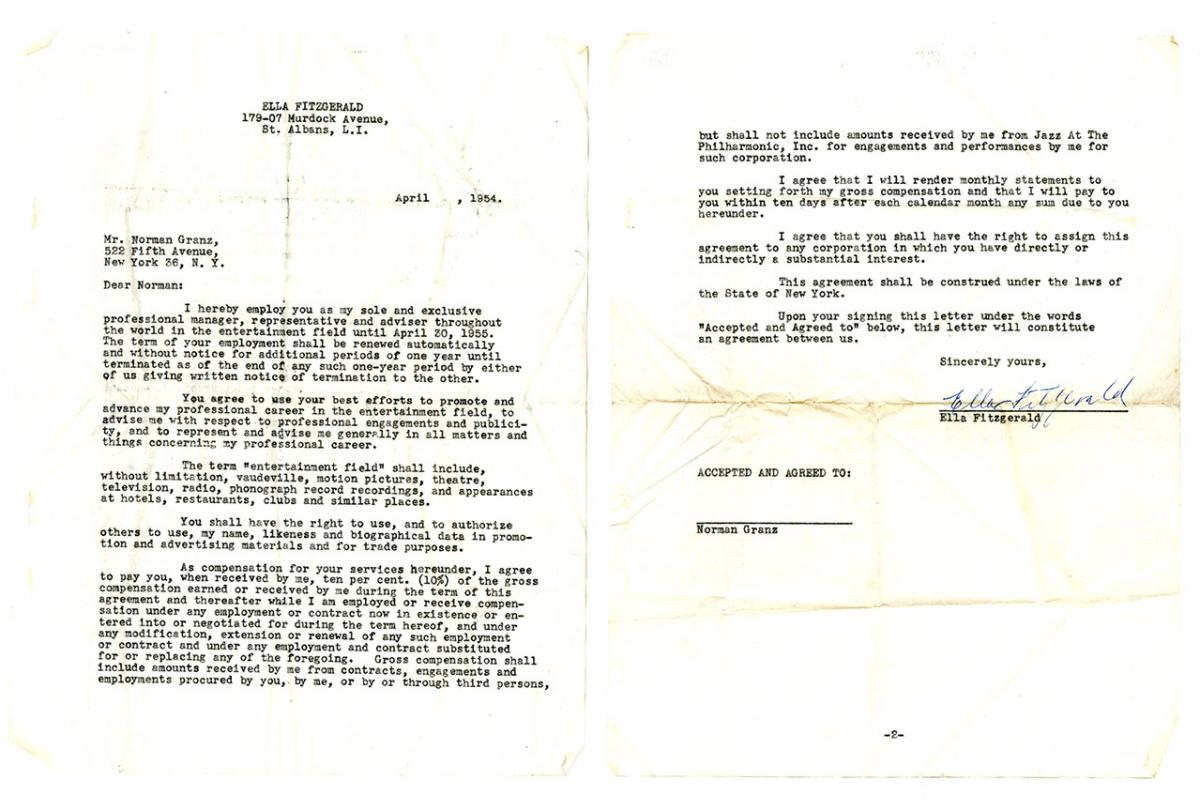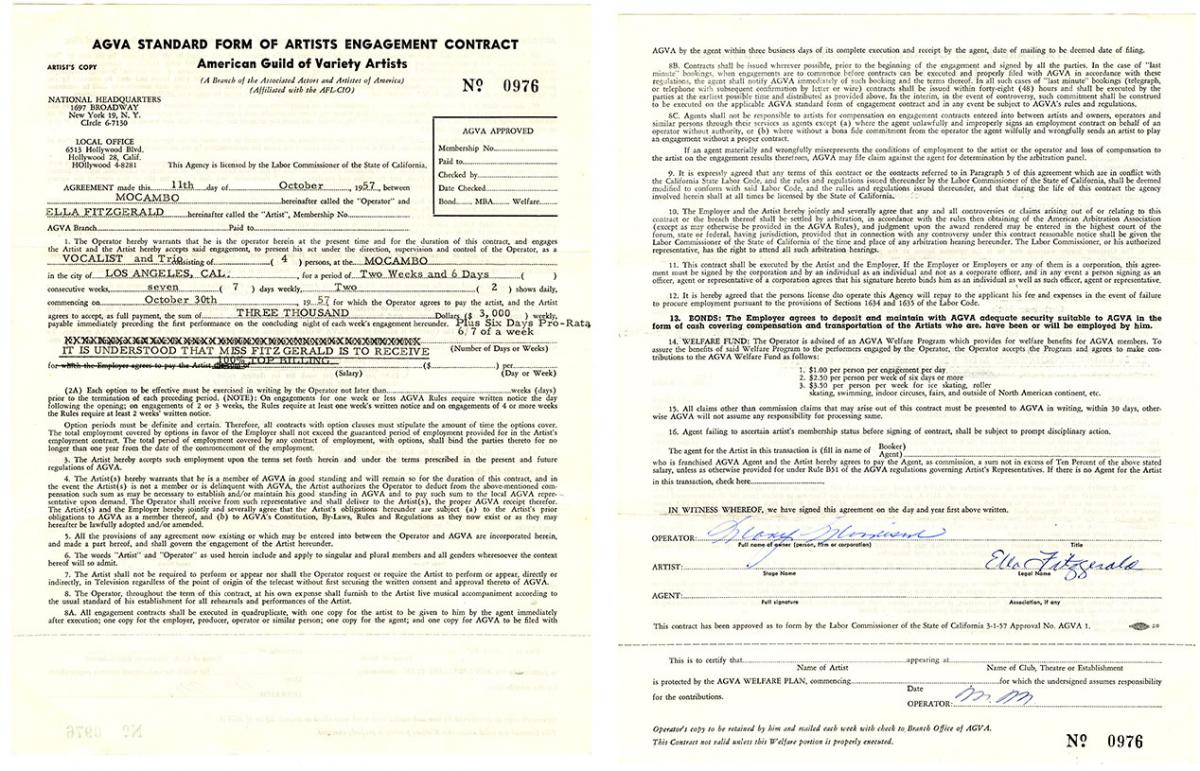
By intern Rebecca Kuske
This post originally appeared on the National Museum of American History blog, O Say Can You See?
In the Archives Center, jazz always seems to be a topic of discussion, whether it be a researcher looking for the Duke Ellington Collection or processing negatives for the Duncan P. Schiedt Photograph Collection. We are constantly pulling, researching, processing, and scanning different jazz-related sheet music, photos, correspondence, and other documents. All the jazz research compelled me to dig deeper into the life of my favorite jazz musician, Ella Fitzgerald.
Among the documents and photos in the Archives Center's collection of Ella Fitzgerald Papers, I found fascinating primary sources pointing at Fitzgerald's connections to the civil rights movement.

Ella Fitzgerald is and always will be remembered for her contributions to jazz and popular song. Her unique, velvety voice is one of the things that separated her from every other rising star of her time. Her voice made her legendary, elevating her to the ranks of jazz icons Duke Ellington and Louis Armstrong. Over her long career, her voice took her to many different venues, cities, and countries. It even took her to places that many African Americans dared not go in the late 1950s and 1960s, an era of racial segregation. Her undeniable talent, however, allowed her to open doors not only for herself, but for the many African American performers who followed her.
In April 1954 Fitzgerald signed a contract making Norm Granz her sole manager. Granz was an avid civil rights activist who fought hard to ensure equality for the musicians he managed, and he did this by fighting to keep their shows free of discrimination.
In October 1955 Granz met with a ticket seller in Houston prior to a Dizzy Gillespie and Ella Fitzgerald performance with the concert tour called Jazz at the Philharmonic (JATP). JATP was a series of concerts and recordings performed by some of the biggest jazz stars of the time and produced by Norman Granz. In Houston, he made sure to tell the ticket seller that this would be an integrated show, and, on October 7, he proceeded to take down the "Negro" and "White" labels from the bathroom doors. Houston had a history of being extremely conservative, so Granz's attempt to integrate the show was not well-received. Once the first show came to its close, police stormed into Fitzgerald's dressing room and arrested Fitzgerald, Gillespie, and other musicians. They were treated as criminals. And yet, once taken to the police station, Fitzgerald recalled still being asked by the police officer for her autograph.
This was not enough to stop Granz from continuing his mission. As Fitzgerald's manager, he wanted to give her as much equal opportunity as possible, and, despite some setbacks, he was met with much success.
It was difficult for venues to deny Fitzgerald on the basis of race when her talent was loved by so many and she could draw huge crowds. Of her fans, one of the most prominent was singer, actress, and icon Marilyn Monroe. She was such a big fan of Fitzgerald that she used her connections to help advance Fitzgerald's career and ultimately allow more people the opportunity to witness her performances.
In October 1957 Monroe made a call to the Mocambo nightclub in Los Angeles, on behalf of Fitzgerald. Monroe used her social status and popularity to make a deal with them. If they allowed Fitzgerald to perform, Monroe promised that she would take a front-row seat every night, and that is exactly what happened. Monroe's presence in the front row, night after night, would create powerful publicity for the club—a deal they found attractive. As a result, Fitzgerald became the first African American to perform at Mocambo, and it gave her career a big boost.
During her life, Fitzgerald was awarded the National Association for the Advancement of Colored People (NAACP) Equal Justice Award and the American Black Achievement Award, as well as many other honors that celebrated her talents and accomplishments both in the jazz world and in the civil rights movement. Fitzgerald was seen as an inspiration. Her drive pushed her career forward, and by using her talent and help from her friends, colleagues, and manager, she was able to break down seemingly impossible barriers.
Want to learn more about the American experience through the transformative power of jazz? The museum’s Smithsonian Jazz team strongly recommends you check out their website to explore our jazz oral history collection, get tickets to performances by the Smithsonian Jazz Masterworks Orchestra, celebrate Jazz Appreciation Month, and more. Or sign up to receive a monthly jazz e-newsletter from the museum for regular reminders.
Rebecca Kuske completed an internship with the Archives Center at the National Museum of American History.


